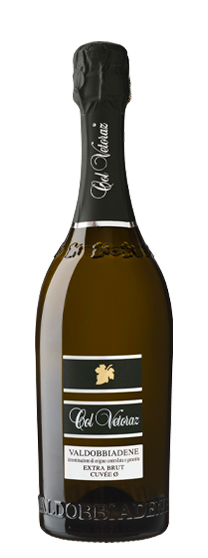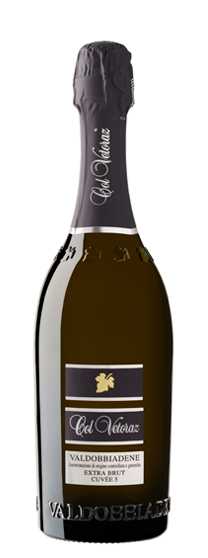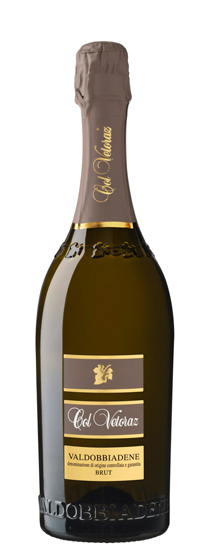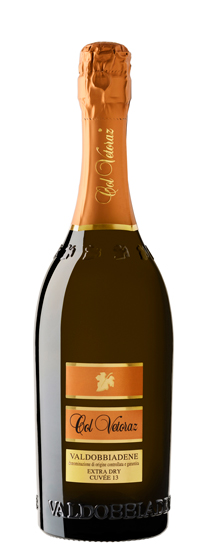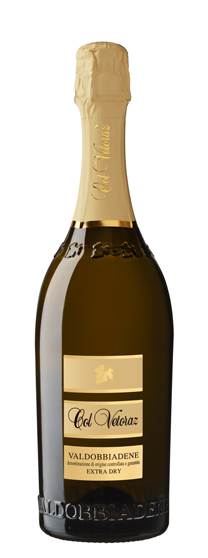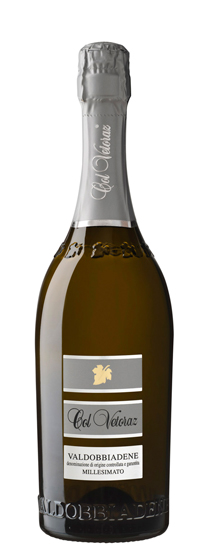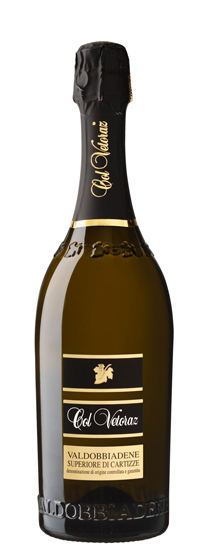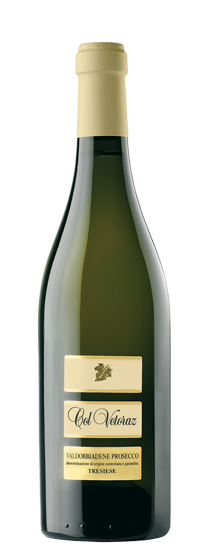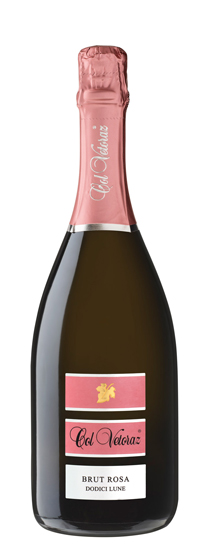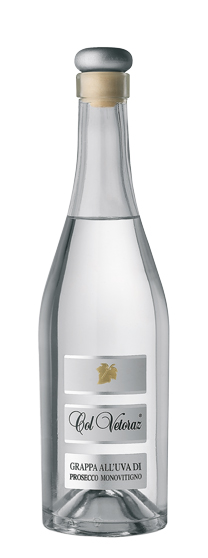Our wines
The choice to produce exclusively hand-made Valdobbiadene DOCG wines
The Valdobbiadene DOCG comes from a small hilly area in between the villages of Conegliano and Valdobbiadene, where its cultivation finds the ideal conditions for its maximum expression.
The Valdobbiadene DOCG is the synthesis of various soils, climate and men expertise combination that has been handed down for generations the art of the work done by hand. This is the only way to cultivate these steep hills “embroidered” from the vineyards, which create a so spectacular environment that it has been recognised as a UNESCO World Heritage Site.
The history of a wine, especially if of ancient origins, is intimately linked not only to the land where it is produced, but also to the events that over the time have marked the life of the successive generations inhabiting the local territory. Valdobbiadene DOCG, in fact, grown for over 10 centuries in the foothills of the Marca Trevigiana running from Valdobbiadene to Conegliano, has significantly influenced the habits, the customs, the traditions and the economy of the local community.
Last grape harvests
-
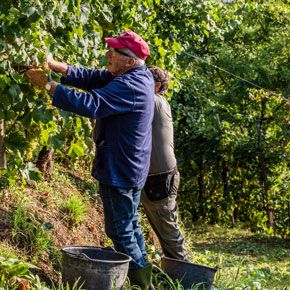 2023 Harvest Report
2023 Harvest Report
We certainly could not say that the summer of 2023 was one of drought. It came after a particularly dry winter, but from budbreak onwards the climate was almost perfect, with just the right amount of rain and hot and cool spells at regular intervals; the only exception was the excessive heat in August which, luckily for us, arrived before véraison had even begun and did not therefore compromise the grapes’ aromatic profiles and acid balance. Then the rain came, along with a drop in temperatures. Fortunately, these immediately rose once again, maintaining however thermal excursions between day and night of up to 15 degrees. Another factor was the major hailstorm that affected our region but - as is well known - hail manifests itself in limited areas, so consequently it could not have an adverse effect on the whole of our production. The harvest is now almost completed: the musts are slowly fermenting and are wafting delicate scents of flowers and fruit into the air, a prelude to balance and elegance. -
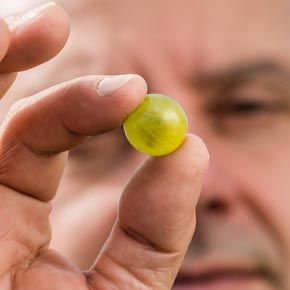 2022 Harvest Report
2022 Harvest Report
A complex year, but with reassuring prospects The musts from the grapes of the 2022 vintage, which have now all been harvested, are slowly fermenting, and this process pervades the whole of the winery, emanating a symphony of heady perfumes of flowers and fresh fruits. The 2022 vintage has been decidedly complex and definitely not easy to decipher. If we make a chronological analysis, we can recall a winter with little rainfall, high average temperatures, and a total absence of snow. The spring that followed also followed the same pattern. This led to a slightly early start to the vines’ vegetative cycle, but in a situation of stress from lack of water. Despite this, as vines are a particularly adaptable species, their development was regular up until flowering, which took place between the last few days of May and the beginning of June. Favourable weather allowed for a perfect and homogeneous fruit set. Constant extremely dry, sunny weather during the months of June and July really put to the test the capacity for resistance of the always very generous vines, producing medium-sized, loosely packed bunches of grapes that were smaller than usual, but perfectly healthy. Fortunately, from early August onwards, the area at the foot of the hills in the Conegliano Valdobbiadene denomination witnessed a slight change in the weather, with cooler nights and some small but sufficient rain showers: these quite literally saved the vintage. The bunches started to develop in a regular manner, displaying a well-balanced shape and an appealing golden hue. Harvesting at Col Vetoraz therefore began in the first few days of September; the cool nights allowed the company to pick healthy, perfectly ripe fruit in ideal conditions.“Considering therefore our analyses overall,” comments Loris Dall’Acqua, the company’s oenologist and managing director, “our forecasts for the vintage are encouraging and undoubtedly better than the expectations that such a complex year had initially offered us.”
-
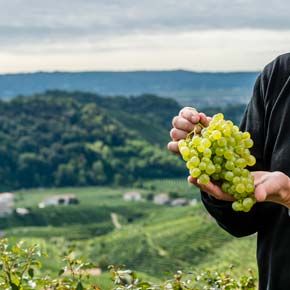 2021 Harvest Report
2021 Harvest Report
The harvesting of the grapes for the 2021 vintage at Col Vetoraz has now been completed, and in this period the winery is filled with a symphony of inebriating perfumes resulting from the fermentation of the musts for our Valdobbiadene D.O.C.G. wines, which is now coming to an end. In the spring, the flowering of the vines in the hills of the Conegliano Valdobbiadene zone in fact took place in favourable conditions, coinciding with the end of the cold, rainy weather that had characterised the month of May. The various successive phenological phases of the vines were accompanied by a climate that was problem-free, with just the right periods of satisfactory heat, interspersed with refreshing rains. At the time of véraison (when the berries had finished growing in size and had begun to ripen), which began in mid-August, the weather conditions underwent a sudden change: days that were sunny and dry, but not excessively hot, alternated with cool nights - definitely ideal conditions for obtaining balance and elegance in the white grapes. “We have particularly positive expectations about this vintage,” comments Loris Dall’Acqua, oenologist and partner in the company, “due to a growing season whose various stages practically all contributed to well-balanced vines and grapes. In an almost perfect year, only the last ten days prior to the harvest were characterised by excessive heat. This created some concern, but fortunately by then it was almost time to pick the grapes. We now await the outcome with quiet confidence...” -
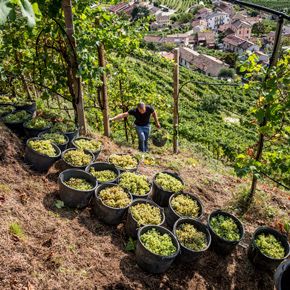 Report grape harvest 2020
Report grape harvest 2020The 2020 harvest of Col Vetoraz gave its best in the second half of September. It is the ideal time to take stock of the season, in a truly historic year due to the pandemic, which if it had a significant impact on the sales front, however did not have negative impact on crops, letting nature take its course.
Spring 2020 presented a particularly mild climate which led to an early budding and an early flowering, which actually occurred with significantly different times in the various areas of the appellation, leading to a harvest spaced fifteen days apart between the southern area and the northern area of the Conegliano-Valdobbiadene appellation.
Unlike the last few years, characterized by a Mediterranean climate, the summer 2020 trend had continental connotations, with not excessively prolonged periods of good heat, interspersed with regular rainfall and sudden drops in temperature. The day/night temperature range was very good, especially during the month of August, a fundamental period for maintaining the aromatic strength and acid balance; all these are very interesting conditions and forerunners of an excellent year.
Fifteen days before the harvest there was a brief phenomenon of bad weather of a rarely seen violence, with intense rains and strong winds. This was followed by an unusual rise in temperatures for the period. These last events, certainly not positive, did not however significantly compromise the final outcome of the year.
In this regard, Loris Dall’Acqua, CEO and oenologist declares: "The first tastes of fermenting musts show the presence of an excellent aromatic heritage, a good acid balance, pleasant flavor and length of taste. These sensations are the bearers of favorable expectations”..
-
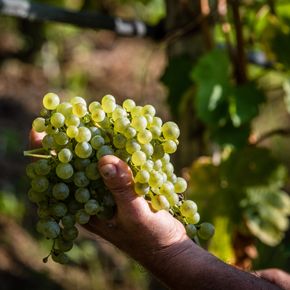 Report grape harvest 2019
Report grape harvest 2019Two weeks before the official start of the harvest there was a forecast of good quality grapes, due to various factors. Compared to previous years, where the flowering of the vine took place in late May-early June, in fact, in 2019 the flowering took place around 10/13 June, St. Anthony's Day, perfect - moreover - according to the wine tradition, in what seems like a return to the roots.
This delay, compared to the flowering of the past few years, was caused primarily by the extensive hailstorm occurred on 26th April, which almost entirely hit the foothills and caused an important production drop, but this allowed the remaining grapes to concentrate more flavor, flavor and structure. The month of May was exceptionally cold and rainy. The month of June was warm and not very rainy, but this did not affect the growth of the plant, as the land had accumulated a good water supply during the previous month. After mid-July the climate continued with an alternation of warm and cool periods with regular rains that favored a balanced vegetative growth. In the last period, in August, there were good temperature changes between day and night, a favorable and condition especially for white berry grapes, which gave the best acidity and translucency to the berries. The entire northern area of the appellation had a delayed maturation, this allowed the vine to benefit from the lowering of temperature, above all at night, which characterized the month of September, favoring aromatic preservation and acid balance. The central and southern area of the appellation have presented a fair production. Here the harvest took place after the first ten days of September, with beautiful grapes and good sugar concentration.
The 2019 harvest has had many different facets, causing great differences between the various areas of the Conegliano Valdobbiadene appellation. For Col Vetoraz it began on September 23rd: the wine company waited for the right balance in the ripeness of the grapes, so that the best aromatic expression could take place.
The 2019 vintage will certainly be remembered for the low production of some areas, but probably also for the quality: the wines born from this harvest are giving excellent expectations. -
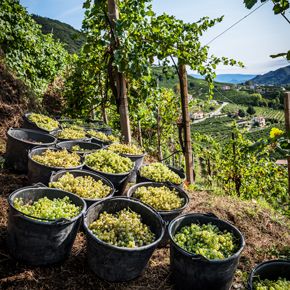 Report grape harvest 2018
Report grape harvest 2018The 2018 season was characterised by a balanced spring, resulting in a beautiful, fragrant and slightly early flowering of the vines. The beginning of summer was variable, with cold rainy periods alternating with spells of hot weather. This encouraged perfect setting of the fruit, good development of the bunches and abundant vegetation.
The second part of summer, on the other hand, was characterised by high temperatures and a lack of rain. As a result, during this period the plants showed slight signs of distress from heat, but not from lack of water, as fortunately the land had accumulated a good reserve of water previously.
These conditions allowed the fruit to ripen normally. The rain and drop in temperature during the last ten days before picking were fundamental in maintaining the acid balance and preserving the abundance of aromas.Grape picking began at Col Vetoraz on Monday 3 September and was generous and well-balanced, with a generally harmonious and fragrant result.
-
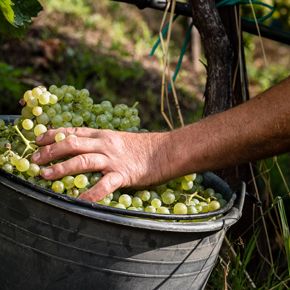 Report grape harvest 2017
Report grape harvest 2017The 2017 grape harvest has just come to an end and the partners of Col Vetoraz, Francesco Miotto, Paolo De Bortoli and Loris Dall’Acqua, take stock of a vintage that will be remembered as particularly complex.
As they observe, the season was characterised by an early spring leading to early budding. This resulted in frost damage in vineyards outside the most favourable area. The subsequent return to normal temperatures delayed flowering, making it possible to begin grape picking during the usual period. The progression of the seasons was characterised by a succession of abnormally hot periods broken at quite regular intervals by rainy spells. As a result, the plants never suffered from a lack of water, but did show signs of heat distress. Towards the grape picking period, there was a drop in temperature followed by rain, conditions which helped preserve the acid balance.As enologist and partner Loris Dall’Acqua explains: "In these conditions, Col Vetoraz was able to select the grapes during the harvest itself, judiciously assessing the origin and correct use for each batch and managing nevertheless to guarantee a standard of quality that, although certainly not optimum, was globally very high".


